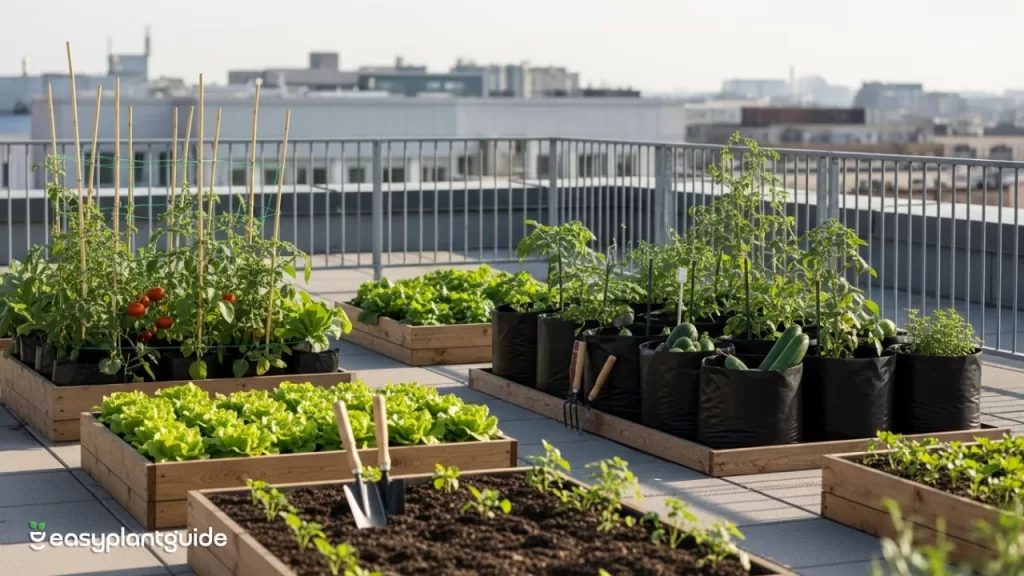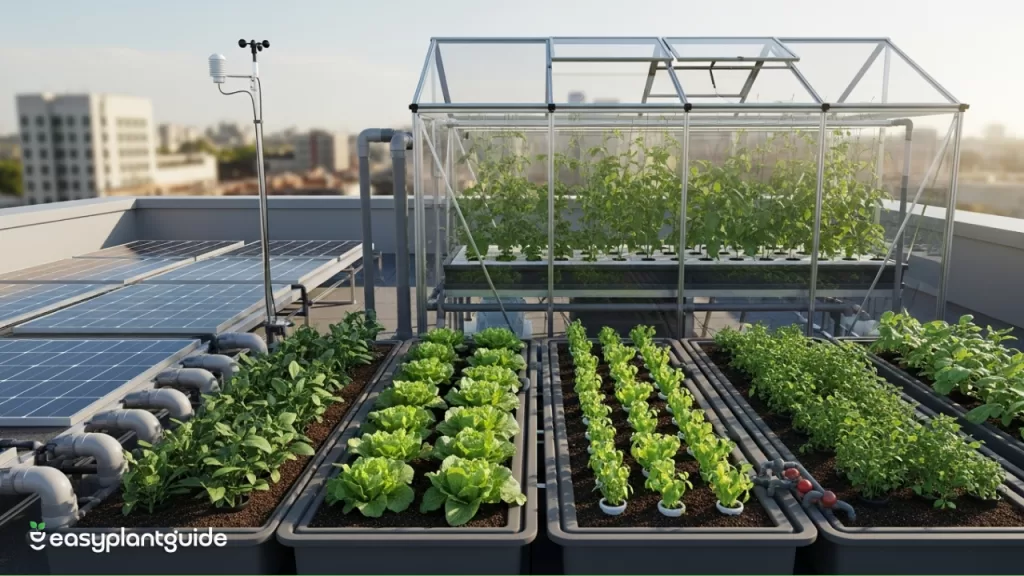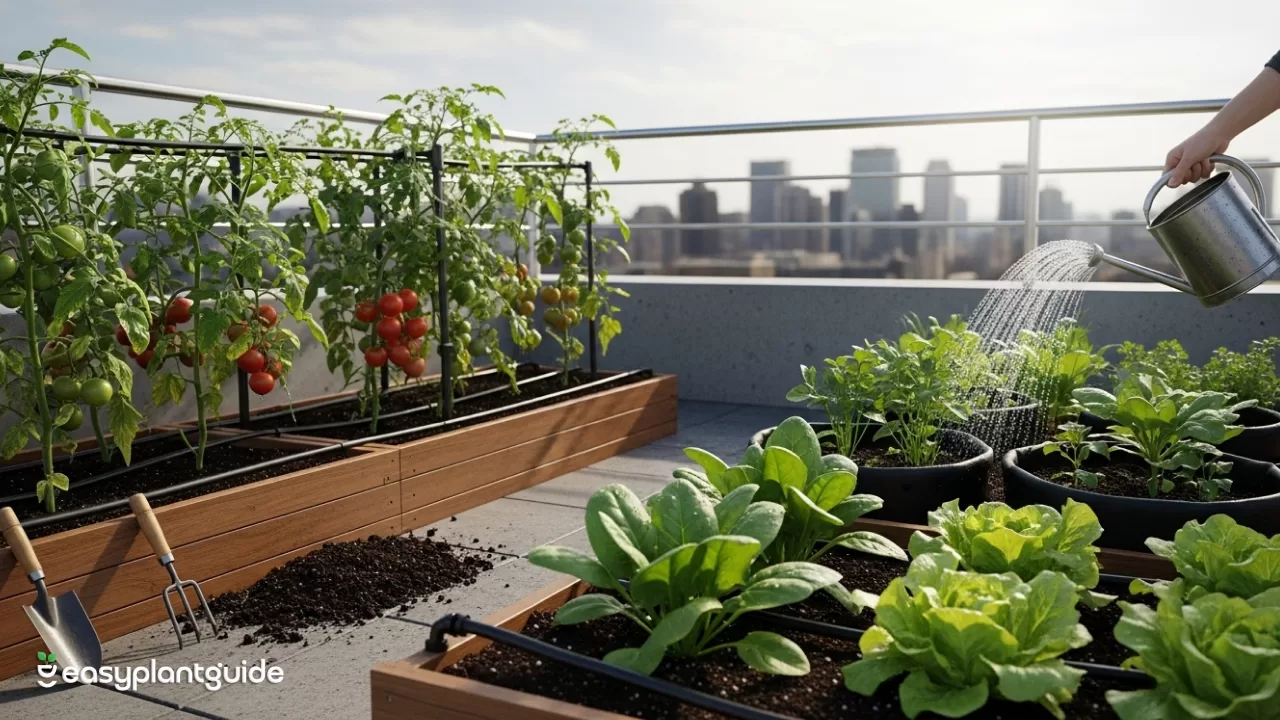7 Powerful Reasons Rooftop Farming Can Transform Your Life
In today’s fast-paced concrete world, space is shrinking while the demand for fresh, organic food is growing faster than ever. Many people dream of farming, but very few have access to land. That’s where rooftop farming comes in—a revolutionary solution that turns unused roof space into vibrant food gardens. Whether you live in a city apartment or own a commercial building, rooftop farming empowers you to grow your own fruits, vegetables, and herbs right above your head. In this article, we’ll dive deep into what rooftop farming is, how it works, why it matters, and how you can start your own rooftop garden—even with little space and no farming experience.
What Is Rooftop Farming?
Rooftop farming, also known as roof farming or urban rooftop What Is Rooftop Farming?agriculture, is the practice of growing food on the rooftop of buildings. This can include vegetables, fruits, herbs, flowers, and even small-scale fish or livestock in some advanced systems like aquaponics. Rooftop farming is becoming a global movement because it promotes sustainability, reduces food costs, and makes healthy eating accessible.
Why Rooftop Farming Is Growing in Popularity
Rooftop farming is becoming increasingly popular as urban spaces grow and people look for healthier, more sustainable lifestyles. With limited land for traditional farming, rooftops provide a smart way to grow fresh, chemical-free food close to home. It gives people more control over what they eat while reducing grocery costs.
At the same time, rooftop gardens make cities greener by improving air quality, reducing heat, and supporting the environment. Governments, businesses, and communities are also encouraging rooftop farming because it transforms unused spaces into productive green areas. It’s not just a trend—it’s a practical solution for future cities.
Key Benefits of Rooftop Farming
Rooftop farming offers countless advantages not only for individuals but also for the environment and society.
Health and Lifestyle Benefits
- Provides access to fresh and organic produce
- Reduces mental stress and promotes well-being
- Encourages a healthier lifestyle
- Improves food security
- Creates a connection with nature
Environmental Benefits
- Reduces carbon footprint
- Improves air quality
- Lowers city temperature (reduces urban heat effect)
- Supports biodiversity
- Promotes water recycling
Economic Benefits
- Cuts grocery bills
- Increases property value
- Offers business opportunities like selling fresh produce
- Reduces transportation costs
- Saves energy by providing rooftop insulation
Common Types of Rooftop Farming Systems
| Type of System | Description | Best For |
|---|---|---|
| Container Farming | Uses pots and trays | Beginners |
| Raised Bed Farming | Soil beds built on roof | Larger spaces |
| Hydroponic Farming | No soil, uses nutrient-rich water | Modern setups |
| Aquaponics | Combines fish farming with plant growth | Advanced users |
| Aeroponics | Plants suspended in air | Efficient water use |
What Can You Grow in Rooftop Farming?

Rooftop farming gives you the freedom to grow a wide variety of plants, as long as you choose crops that suit your local climate and space. From fresh vegetables to delicious fruits and aromatic herbs, rooftop gardens can be surprisingly productive.
Best Vegetables for Rooftop Farming
Vegetables that grow quickly and don’t need deep soil are perfect for rooftops. Popular choices include:
- Tomatoes – easy to grow in containers and very productive
- Spinach – grows fast and needs little maintenance
- Cucumbers – can climb vertically to save space
- Lettuce – perfect for cool climates and balcony boxes
- Peppers – thrive well in sunlight and warm weather
Best Herbs for Rooftop Gardens
Herbs are ideal for small spaces and bring aroma, flavor, and health benefits. Great options include:
- Basil – grows well in pots and sunny rooftops
- Mint – spreads quickly and survives in most conditions
- Coriander – grows fast and is perfect for kitchen use
- Thyme – drought-resistant and low-maintenance
- Rosemary – long-lasting and ideal for warm climates
Fruits That Thrive on Rooftops
With the right containers and sunlight, many fruits can also grow on rooftops:
- Strawberries – perfect for hanging pots or grow bags
- Lemon – thrives in sunny rooftop conditions
- Papaya – fast-growing and good for larger spaces
- Guava – a hardy fruit tree suitable for containers
- Grapes – great for trellises and vertical spaces
Step-by-Step Guide to Start Rooftop Farming
Starting a rooftop farm may seem challenging at first, but with the right planning and setup, it becomes a simple and enjoyable process. Here’s a beginner-friendly step-by-step guide to help you get started.
Step 1: Check the Roof Structure
Before anything else, make sure your roof is strong enough to support the weight of plants, soil, water, and containers. Older buildings may have limits, so it’s a good idea to get advice from a civil engineer or building expert to avoid structural damage later.
Step 2: Ensure Waterproofing and Drainage
A rooftop farm should never damage the building. Apply waterproofing sheets or liquid sealants to prevent water leakage. Also, install proper drainage systems using drainage mats, pipes, or gravel so excess water can easily flow out without causing roof damage or plant root rot.
Step 3: Choose Your Farming System
Decide how you want to grow your plants. You can go for traditional soil-based farming or try modern soilless systems like hydroponics, aquaponics, or aeroponics. Soil-based farming is cheaper and easier for beginners, while hydroponics gives faster growth in less space.
Step 4: Set Up Containers or Beds
Once the layout is ready, arrange your growing containers. Grow bags, plastic pots, wooden planters, and raised beds are ideal for rooftop farming because they are lightweight and easy to move. If space is small, try vertical planters or stackable shelves to grow more crops in less area.
Step 5: Select Soil and Fertilizer
Rooftop soil must be light yet rich in nutrients. Use a mix of coco peat, compost, and perlite instead of heavy garden soil. This keeps containers light and improves air circulation around plant roots. Add organic fertilizers like vermicompost or neem cake to boost plant growth naturally.
Tools and Materials You Will Need
- Grow bags or pots – Lightweight and ideal for rooftops to prevent excess load.
- Organic soil mix – Ensures good root growth with proper aeration and drainage.
- Fertilizer or compost – Provides essential nutrients for healthy plant development.
- Water pipes or drip irrigation – Helps supply water efficiently and saves time.
- Gardening tools – Includes basic tools like trowel, pruner, gloves, and watering can.
- Seeds or seedlings – Choose vegetables, herbs, or fruits based on your climate and space.
- Shade net and support sticks – Protect plants from direct sunlight and support vine crops.
Best Soil Mix for Rooftop Farming
The ideal soil mix for rooftop farming should be lightweight, well-draining, and rich in nutrients to support healthy plant growth without adding too much weight to the building structure. A highly effective mix includes 40% coco peat, which helps retain moisture and keeps the soil light, 30% garden soil to provide essential minerals, 20% compost to enrich the medium with organic nutrients, and 10% perlite or sand to improve drainage and prevent waterlogging. This balanced combination ensures proper aeration and healthy root growth, making it perfect for rooftop gardening.
Rooftop Farming Design Ideas
Rooftop farming doesn’t require a large space—what you need is smart planning and creative use of available area. You can set up vertical farming systems to grow more plants in limited space by stacking planters or using wall-mounted shelves. Hanging planters are another space-saving idea that also add visual appeal by suspending pots from railings or hooks. If you prefer soilless farming, hydroponic systems allow you to grow vegetables using nutrient-rich water.
For a compact and stylish setup, spiral herb gardens provide multiple planting layers in a small footprint, while pallet gardens offer an affordable and rustic way to grow vegetables or flowers using recycled wooden pallets. These design ideas not only save space but also transform rooftops into productive and beautiful green spaces.
Challenges in Rooftop Farming and Their Solutions
Rooftop farming is rewarding, but it comes with its own set of challenges. Understanding these issues early helps prevent problems and ensures long-term success.
Common Challenges
One of the biggest challenges in rooftop farming is water management. Since rooftops are exposed to direct sunlight, soil dries out quickly and plants can suffer from dehydration. Another issue is heavy winds, especially on tall buildings, which can damage plants or blow away lightweight containers. Limited sunlight is also a problem in urban areas where taller buildings cast shadows on smaller rooftops. In addition, roof load limits must be considered, as placing too many heavy pots or soil beds can put structural pressure on the building. Finally, rooftop gardens are also prone to pests like aphids and mites, which can spread quickly if not controlled.
Practical Solutions
Most of these challenges can be solved with smart planning. Installing a drip irrigation system helps manage water efficiently by providing slow and steady moisture to plants. To protect crops from strong winds, farmers can set up windbreak nets or plant wind-tolerant shrubs around the rooftop edges. If sunlight is limited, choosing sun-loving or shade-tolerant plants based on the roof’s exposure can make a big difference. Using lightweight grow bags, coco peat, and raised beds helps stay within the roof’s weight limit while still providing a healthy environment for plants. For pests, natural remedies like neem oil sprays or growing pest-resistant crops can protect plants without harmful chemicals.
Future of Rooftop Farming

With rapid urbanization and shrinking agricultural land, rooftop farming is no longer just a hobby—it’s becoming a smart solution for future cities. As climate change affects global food production, growing food locally is now more important than ever. Rooftop farming reduces pressure on rural farmland, cuts long-distance food transportation, and promotes healthier urban living. Many developed countries like New York, Tokyo, Dubai, and Singapore are already transforming unused rooftops into productive farms.
Governments are offering subsidies for green roofs, while businesses are integrating rooftop farms into hotels, schools, offices, and restaurants. In the future, rooftop farming will combine smart technologies like hydroponics, solar-powered irrigation, and AI-based plant monitoring, making farming possible even in dense cities. It has the potential to revolutionize food security and help build greener, cleaner, and more self-sufficient urban communities worldwide.
Conclusion
Rooftop farming is much more than just gardening; it’s a step toward a healthier, greener, and more self-reliant lifestyle. Whether you want to save money, eat organic food, or make your city greener, rooftop farming is a rewarding journey that anyone can start. With the right planning and tools, your roof can become your private farm in the sky. If you’ve ever dreamed of growing your own food, now is the perfect time to start. So why wait? Your rooftop could become the next green revolution!
Explore more plant blogs and grow your green journey with us.




